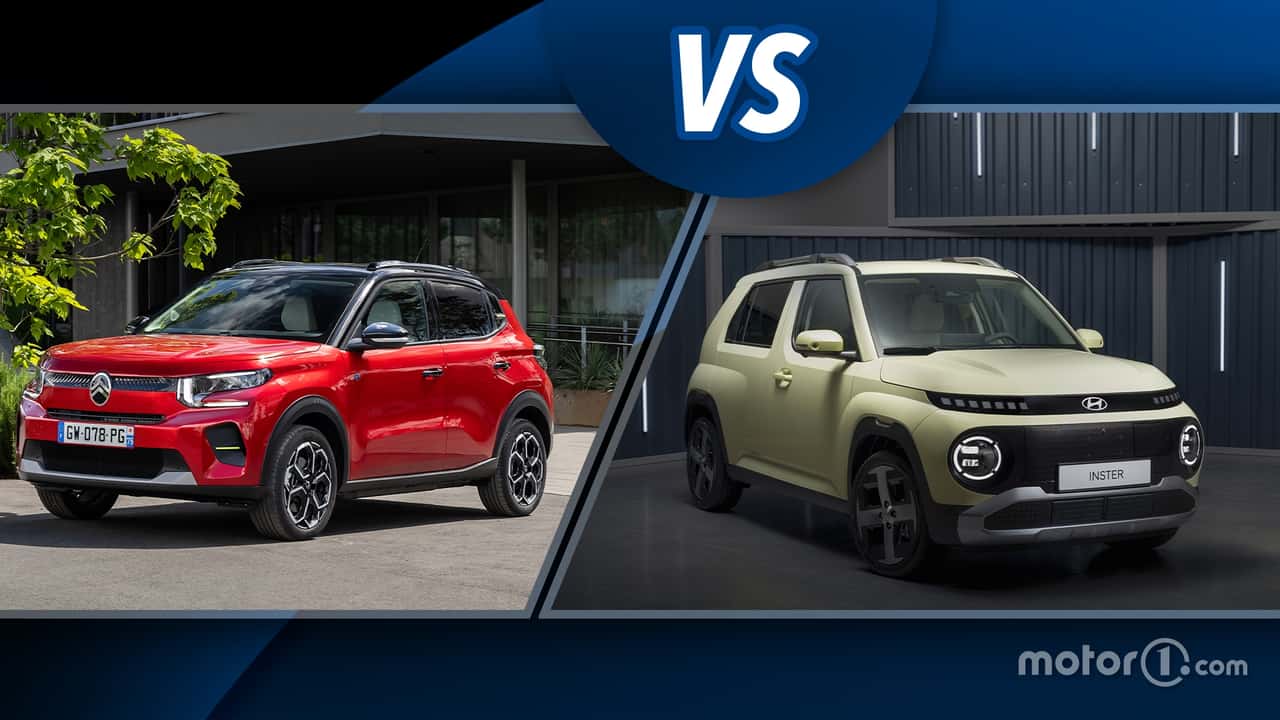Fair prices, compact dimensions, great utility – a comparison of the compact cars
The subcompact segment has thinned out considerably in recent years due to safety and emissions regulations. This has resulted in high prices and low profitability for manufacturers. But in 2025, a number of fully electric microcars will appear that could revitalise the subcompact market.
With manageable entry-level prices, the new Citroën C3 and the Hyundai Inster are entering precisely this segment. Two fully electric crossovers for the city and beyond – the French model also comes with combustion and hybrid drive. Both are characterised by an individual design, with just as much technology on board as necessary. Our comparison:
The exterior of the new Citroën C3 is characterised by a traditional design. The body is characterised by a clear pattern of vertical and horizontal lines. LED headlights with the typical light signature of the latest models are integrated into the front section.
The black plastic trim on the wheel arches and side sills emphasise a robust and versatile character, while the two-tone roof and body combinations and customisation options are also designed to appeal to a younger audience.
Citroën e-C3 (2024)
Hyundai Inster
The Hyundai Inster also features a personalised design that has been fully adopted from that of its brother Casper (sold in Korea). The little car features some typical Hyundai details, such as the upper headlights in pixel design. The circular light cluster underneath has been retained, giving the Korean crossover a lot of personality.
As with the French competitor, there are plastic applications that also give the Inster a robust character.
The interior of the Citroën C3 continues to rely on the “Advanced Comfort” concept, which focusses on well-being. The uncluttered dashboard is equipped with a small upper display that shows the most important information for the driver. In the centre, the C3 has a budget-saving central smartphone holder. A 10.25-inch touch display moves in when the Max version is ordered.
The C3 is not lacking in ergonomically arranged controls and a generous amount of space for four adults. The boot holds 310 litres of luggage, making it one of the best in the segment.
Citroen C3 (2024), the interior
Hyundai Inster (2024), the interior
The interior of the Hyundai Inster harbours a few hidden details and also appears somewhat more elaborate at first glance. The small Korean does away with a centre console to give the front occupants a more generous feeling of space and plenty of freedom of movement.
In terms of infotainment, it comes with two 10.25-inch displays as standard. Below the centre screen is a large climate control unit with numerous functions and a number of physical buttons. The boot volume can be expanded to up to 1,059 litres thanks to clever use of space and seat folding mechanisms.
Citroen C3 2024, the boot
Hyundai Inster (2024), the boot
The Citroën C3 is available with three different powertrains: petrol, mild hybrid and electric. In the first two cases, under the bonnet is a 100 PS 1.2-litre PureTech, a three-cylinder engine from the Stellantis Group that has just been overhauled. In the hybrid version (not offered in UK), it has a torque of 205 Nm (55 of which is developed by the 21 kW electric motor).
The 48-volt hybrid system, which is also used by Opel-Vauxhall, Peugeot and other Stellantis brands, should make it possible to drive in electric mode 50 per cent of the time in the city.
The electric version – the e-C3 – has an 113 PS front motor powered by a 44 kWh iron phosphate battery, which should enable a range of around 200 miles according to the WLTP cycle. The maximum charging power is 100 kW.
Citroën e-C3 (2024)
Hyundai Inster (2024)
The Hyundai Inster is offered in two all-electric configurations: the entry-level version delivers 97 PS, the Long Range version 115 PS. The drives are combined with a 42 kWh and a 49 kWh battery for a WLTP range of 203 and 230 miles respectively. The Inster has a maximum charging capacity of 85 kW.
1.2 PureTech petrol / 100 PS
1.2 PureTech MHEV / 100 PS (+ 21 kW electric motor)
Electric / 113 PS / 44 kWh
Electric / 97 PS / 42 kWh
Electric / 115 PS / 49 kWh
Prices for the Citroën C3 start at £17,990 for the petrol version. The e-C3 starts at £21,990 and the 48V is available from €20,950 in Germany. Standard equipment for all models includes traffic sign recognition, cruise control, fatigue detection, reversing sensors and steering wheel controls.
The all-electric Hyundai Inster starts £1,505 above the e-C3 at £23,495 for the 97 PS version. The longer-range small Korean is available from £25,045 with the 115 PS engine.
More city runabouts in comparison:
